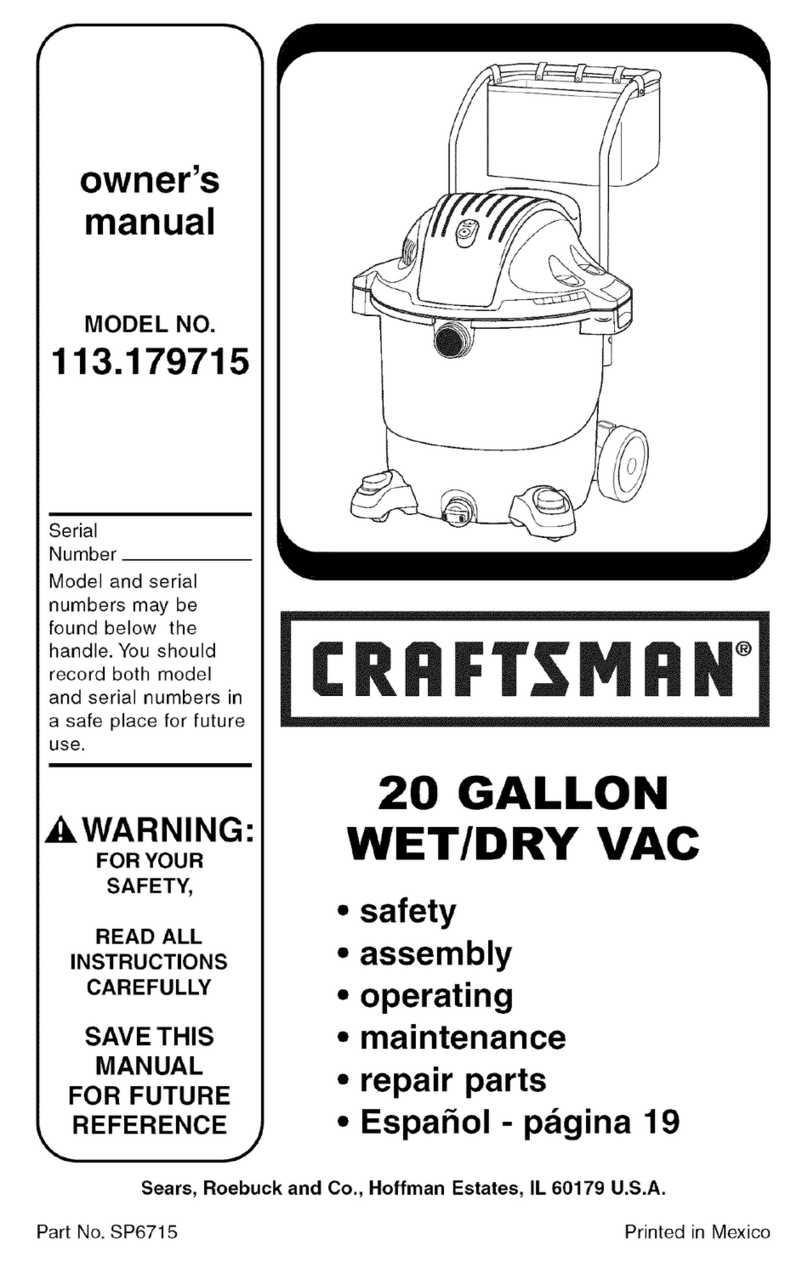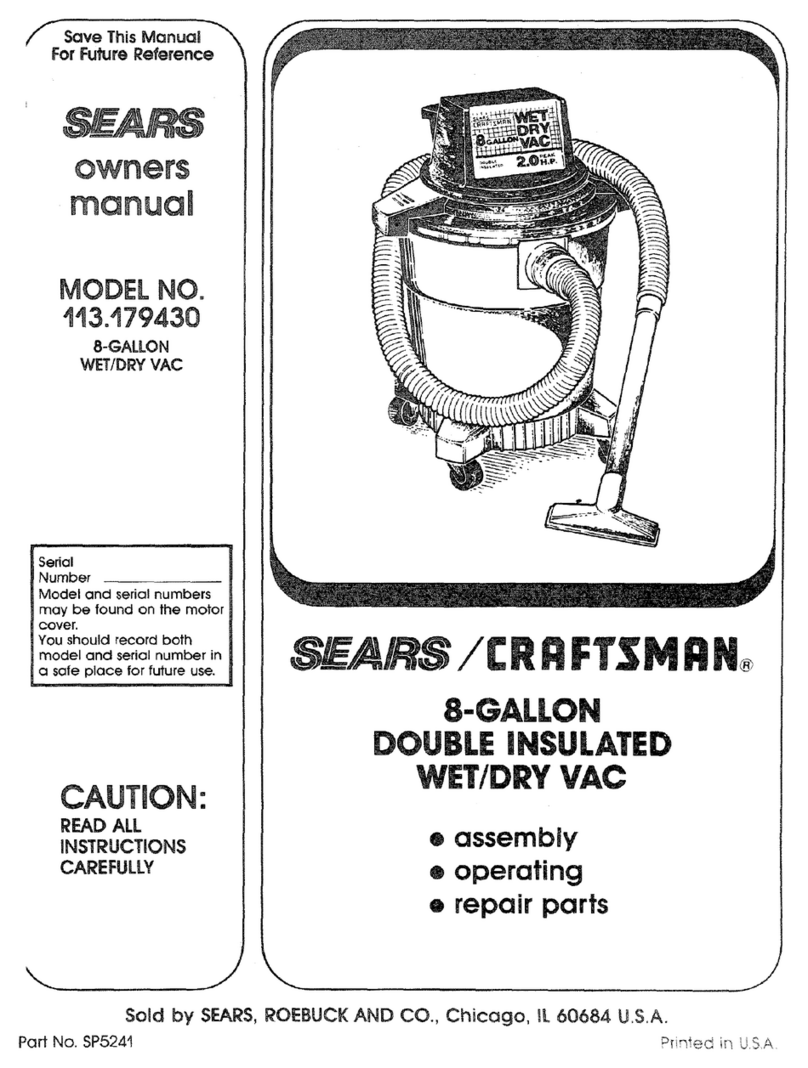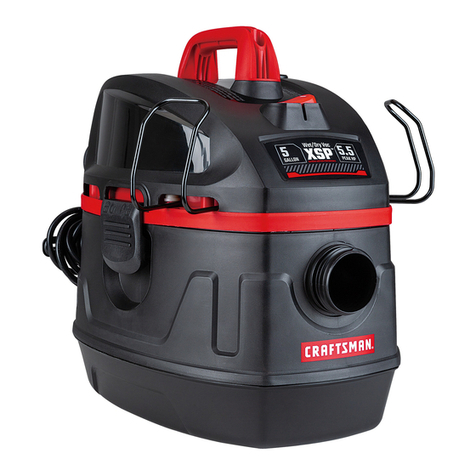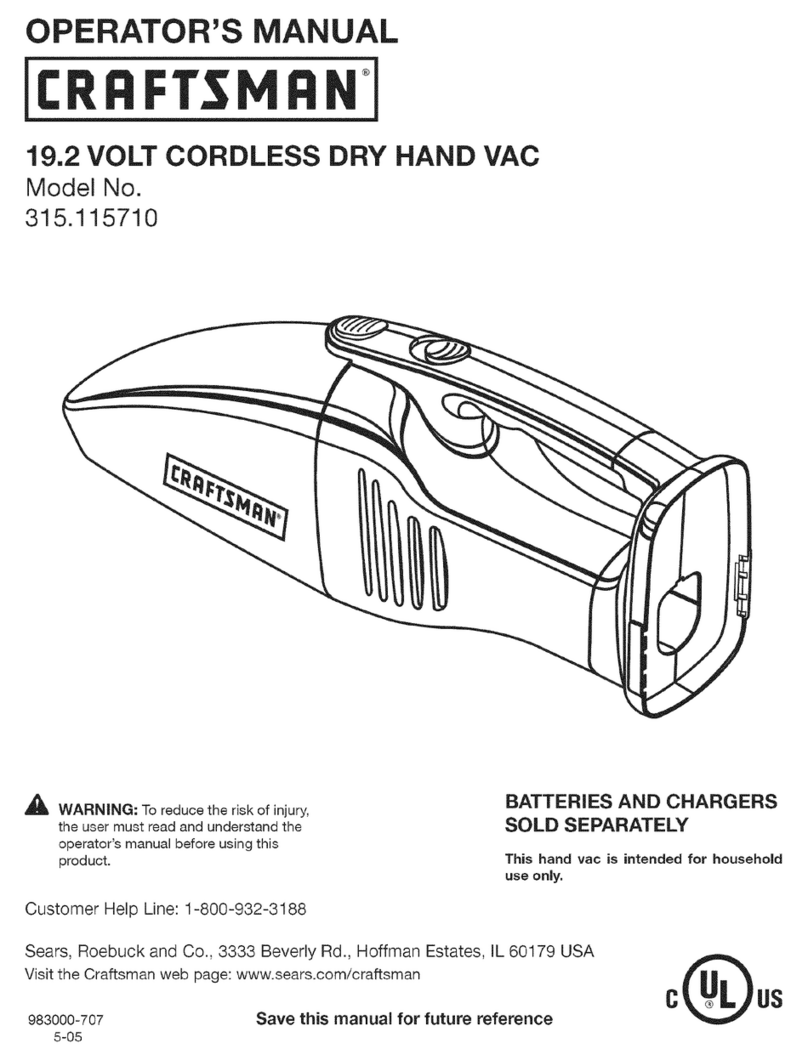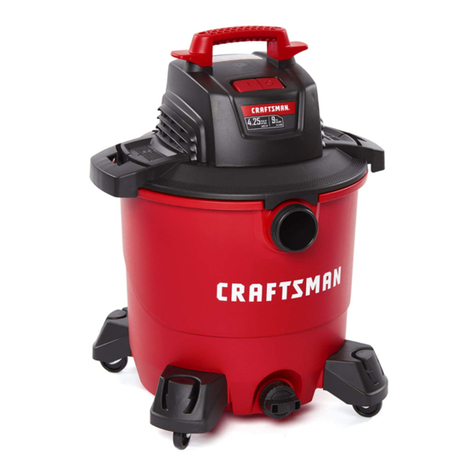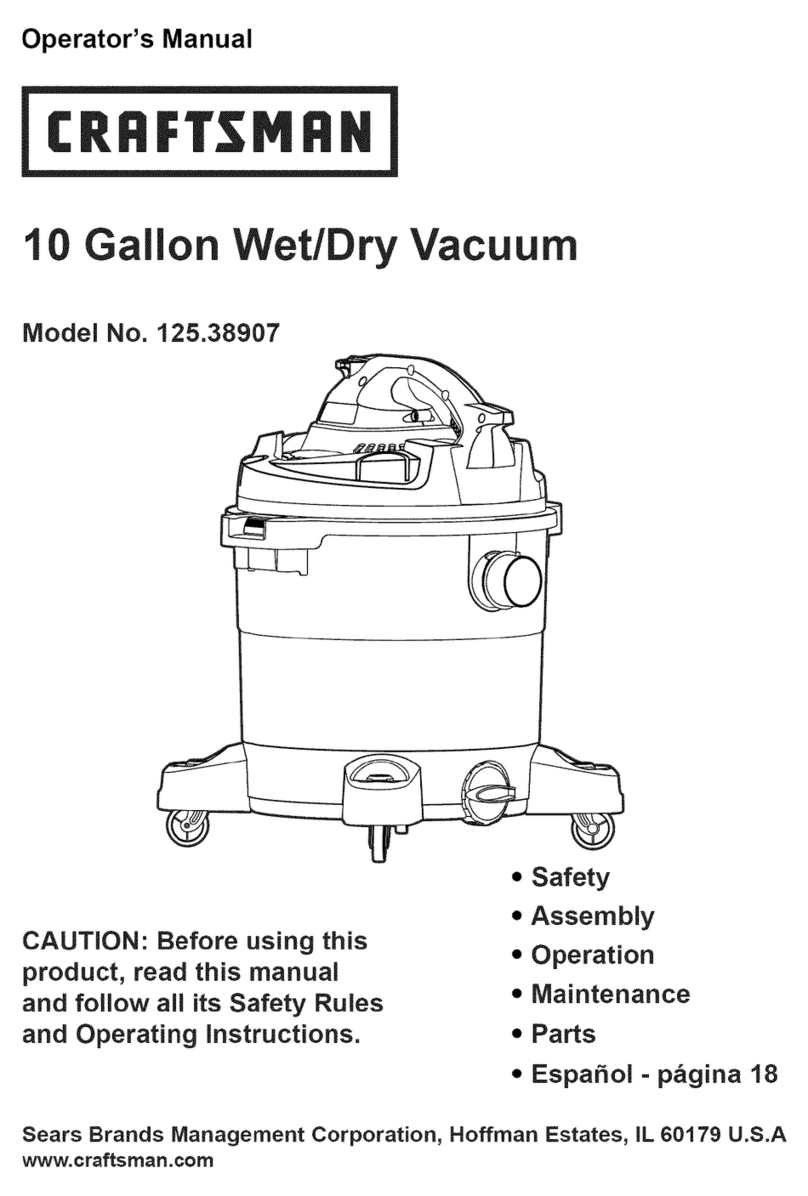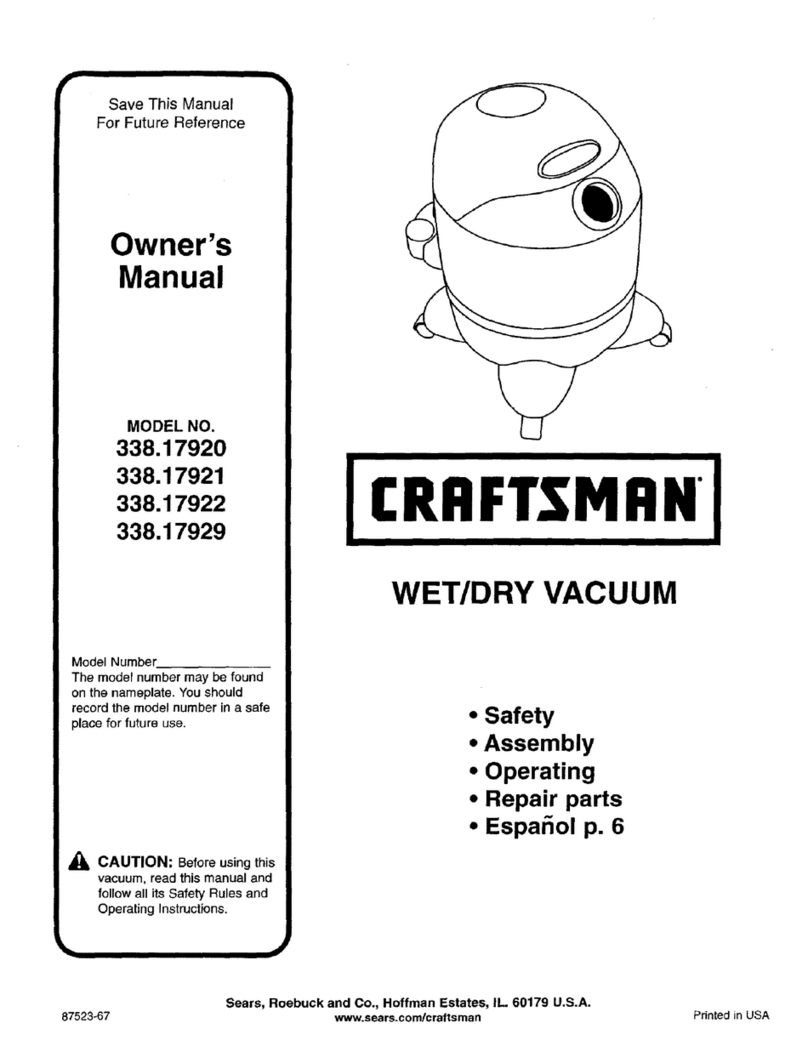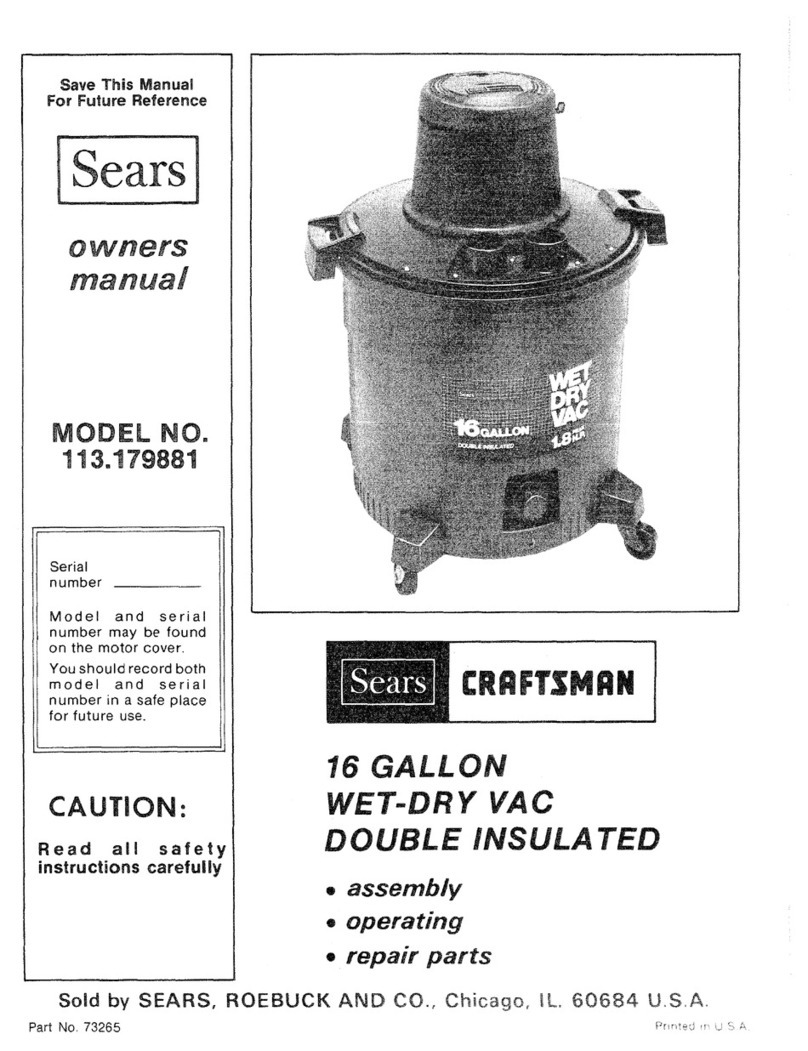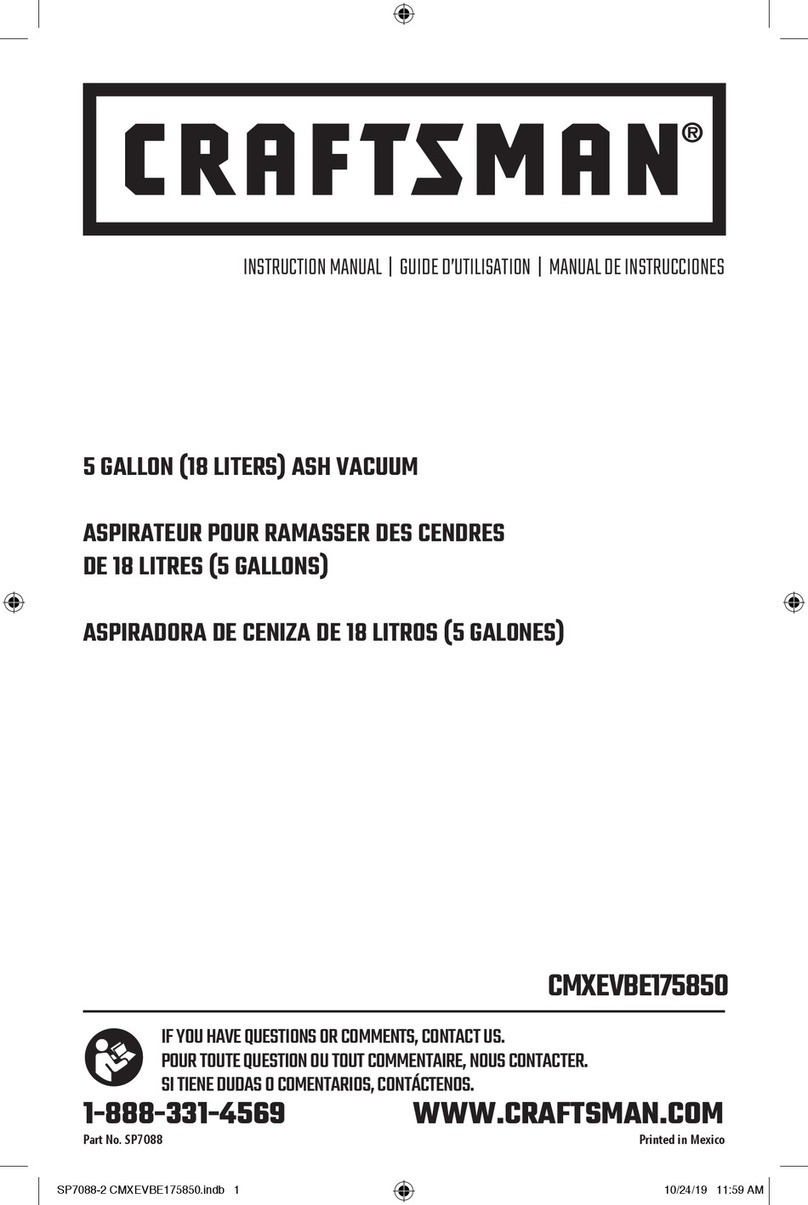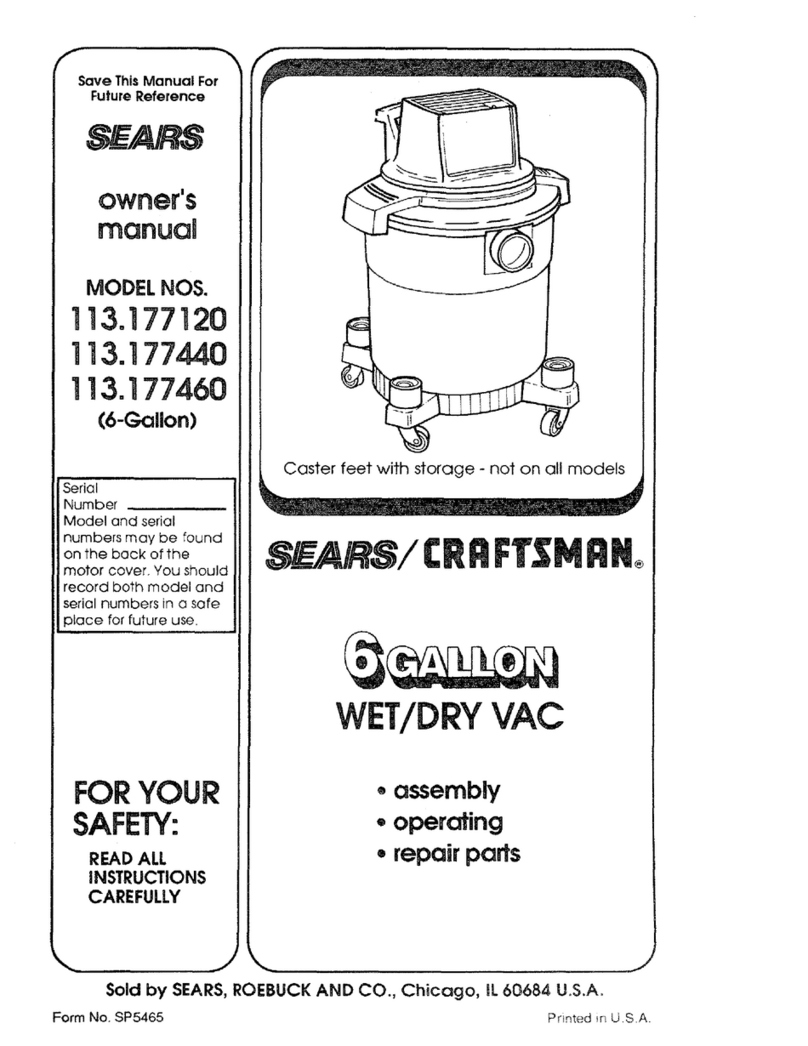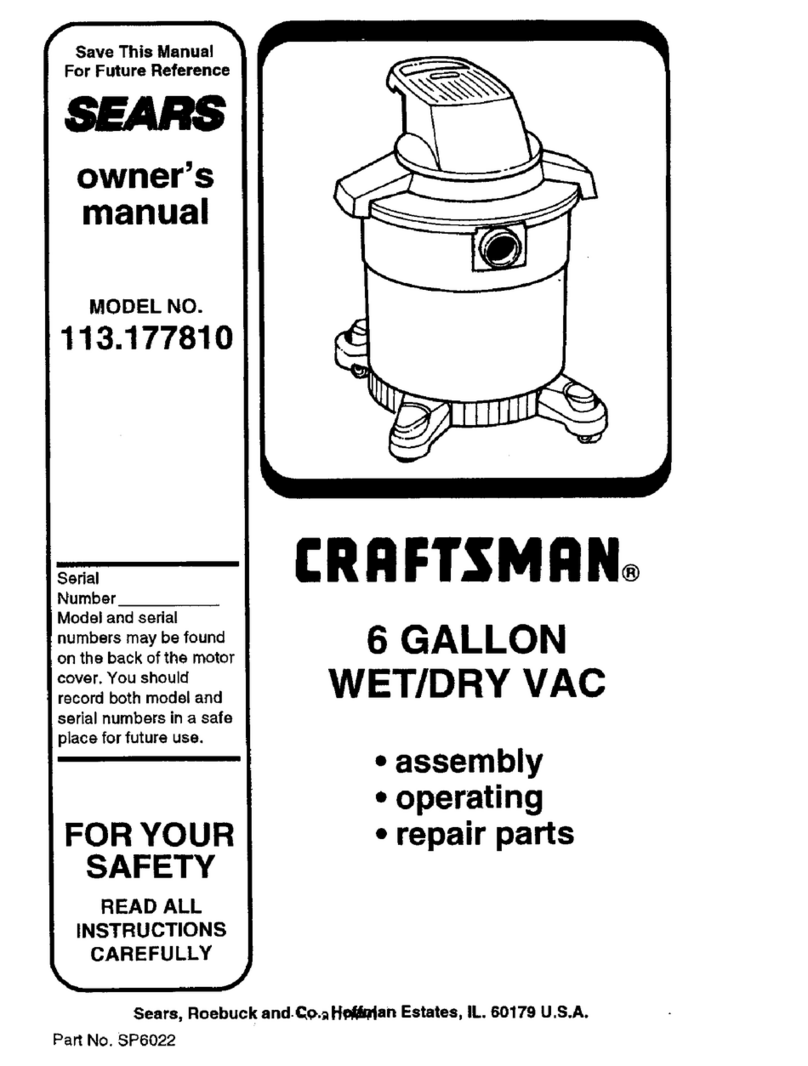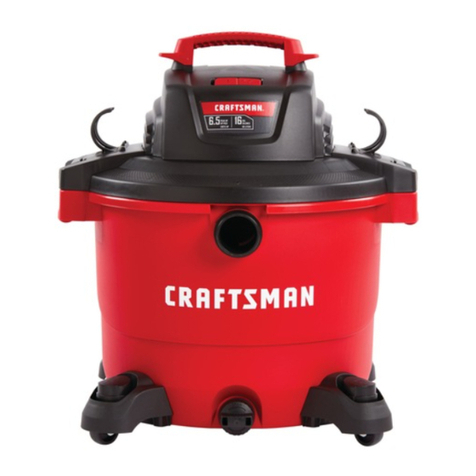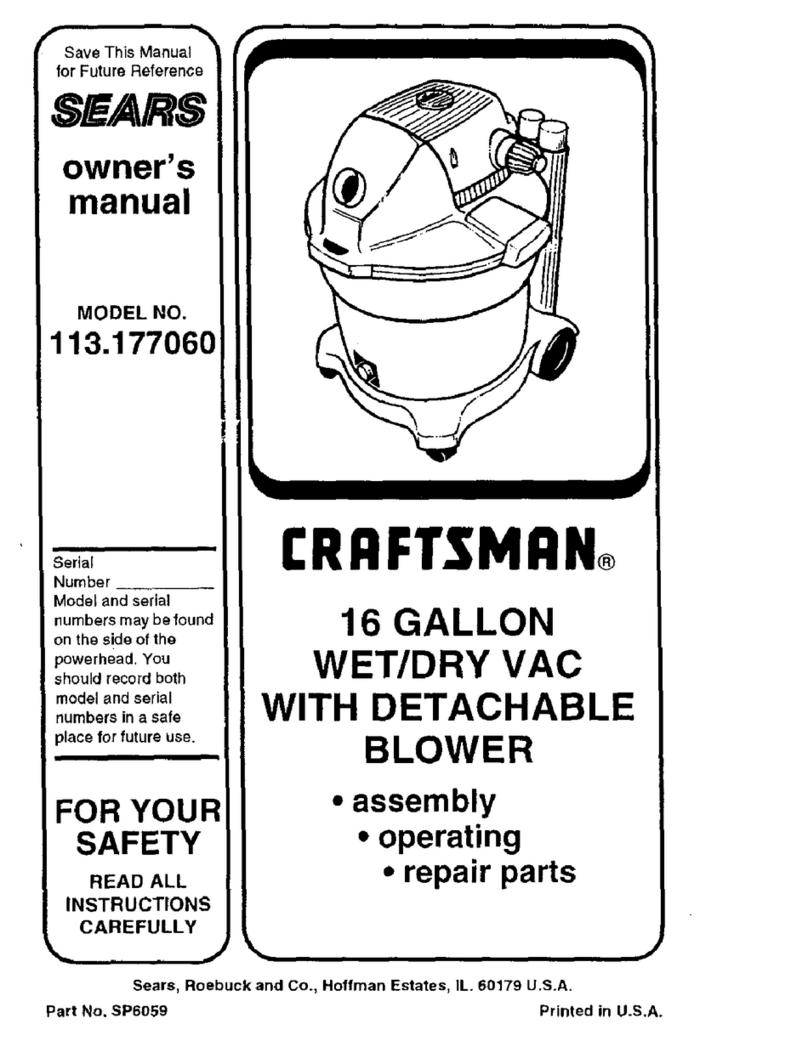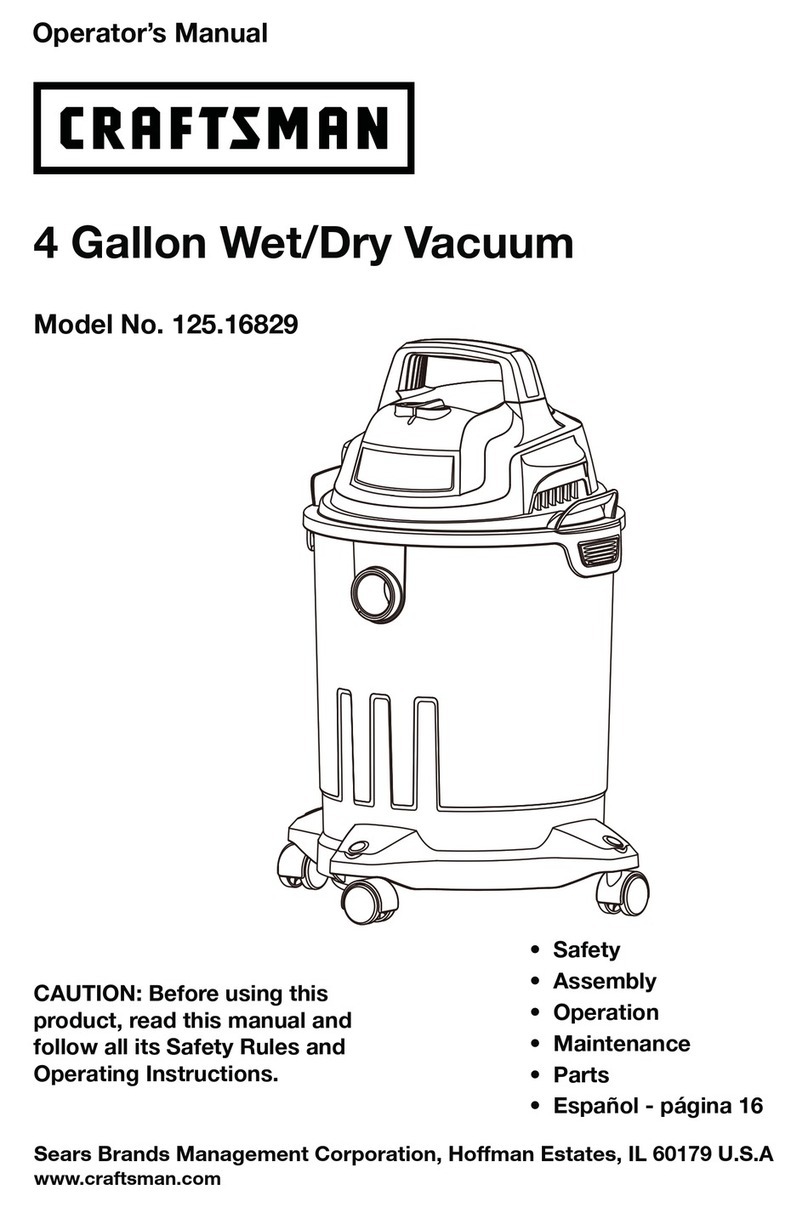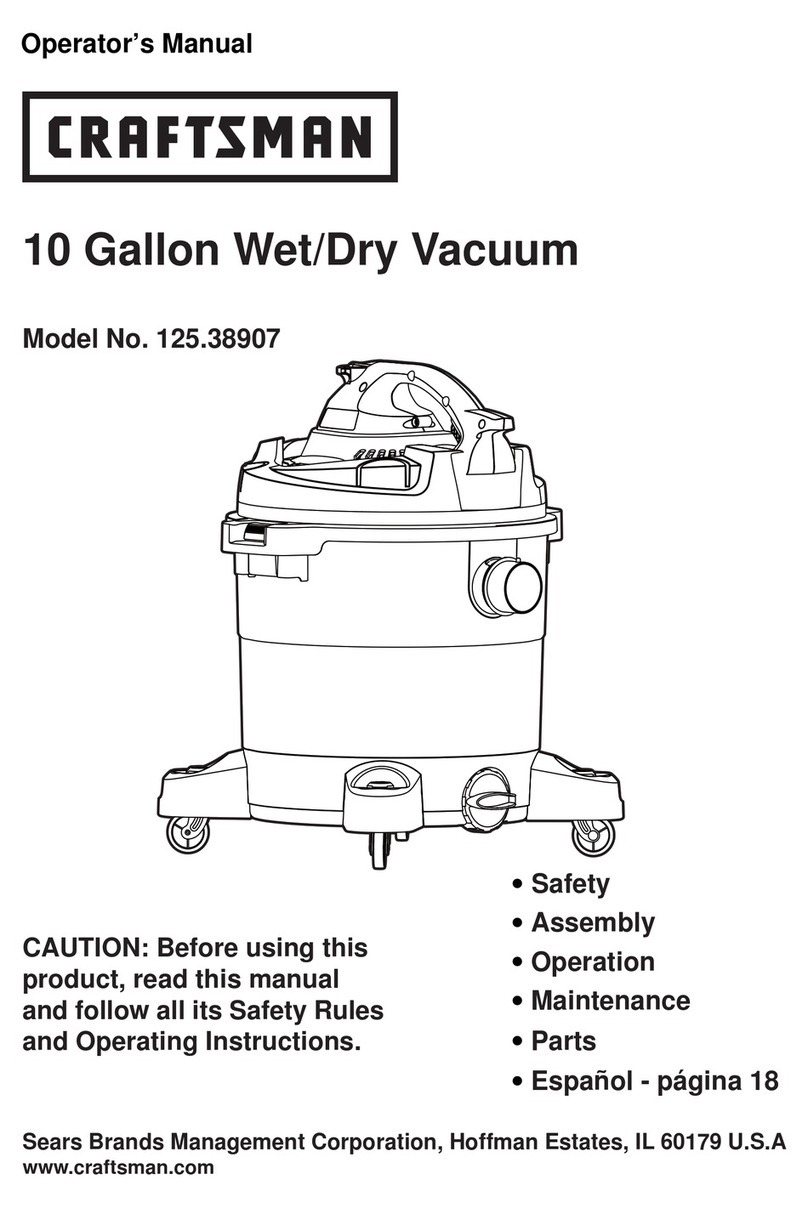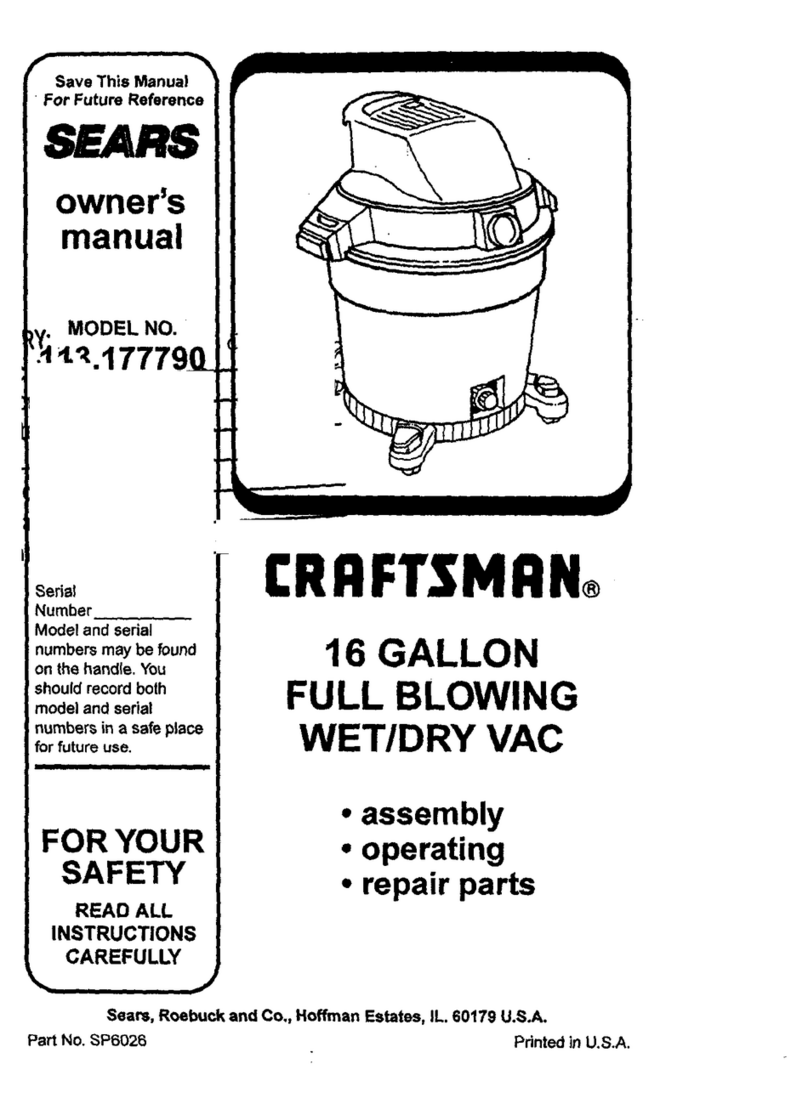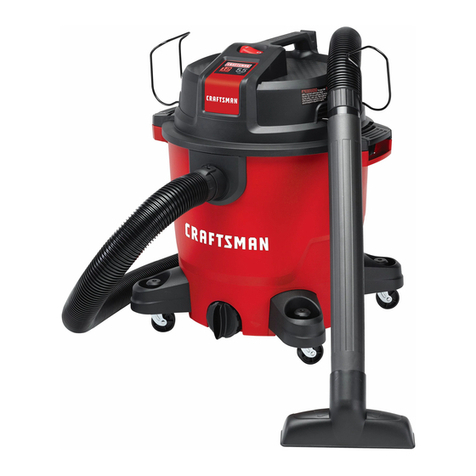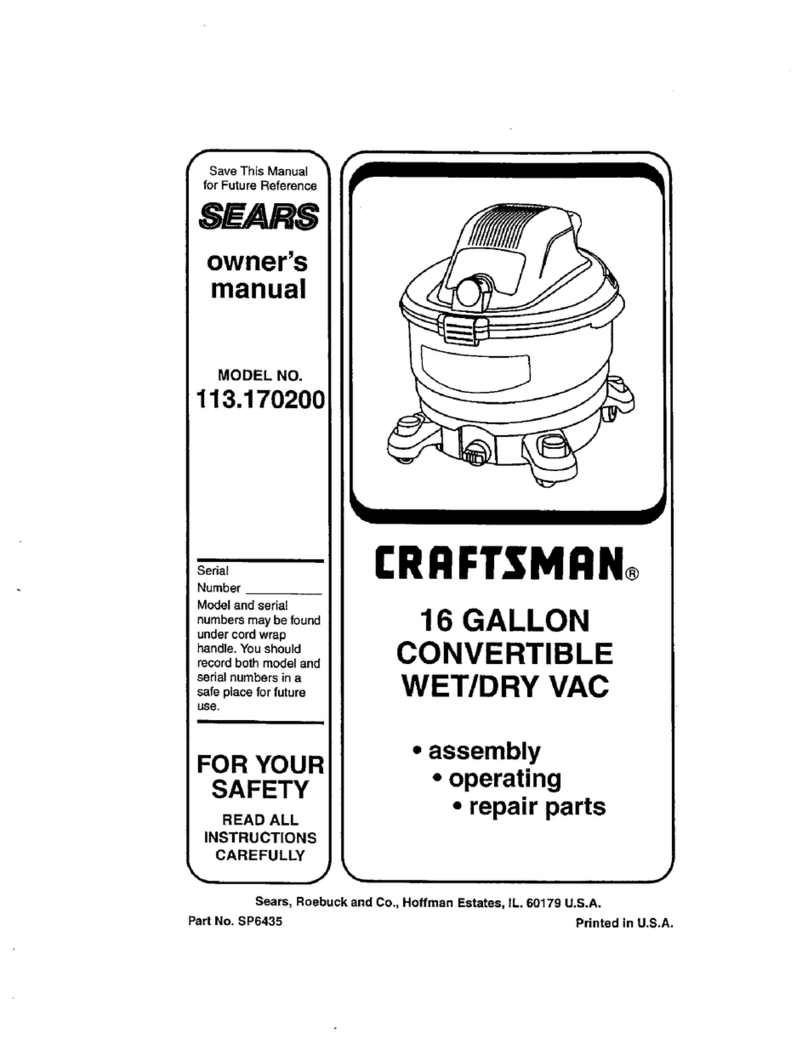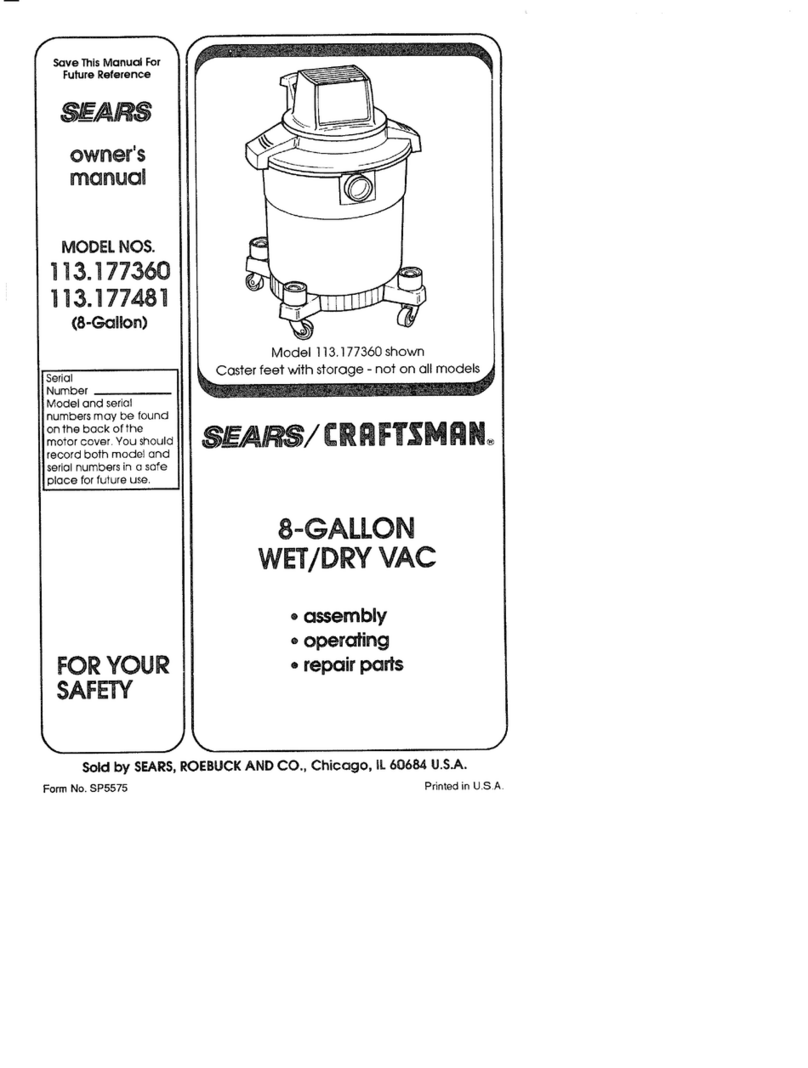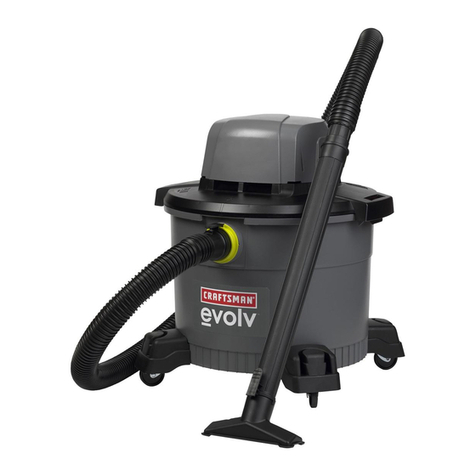• Donot handle charger or Hand Vac with wet hands.
a Do not put any objects in ventilation openings. Do not
use with any opening blocked: keep openings free of
dust, lint, hair, and anything that may reduce air flow.
•NEVER vacuum materials such as hot coals, cigarette
butts, matches, etc.
•Do not use without tilter in place.
mT_rn off all controls before unplugging from or
plugging into an electrical outlet for charging.
•Use extra care when using on stairs,
•Do not usa to pick up hard objects such as nails,
screws, coins, etc. Damage or iniury could result.
• Hand Vac does not have to be plugged into an electri-
cal outlet, therefore It Is always In operating conditfon.
Be aware of possible hazards when using your Hand
Vac or when changing accessories.
•USE ONLY THE CHARGER PROVIDED WITH THIS
HAND VAC. Do net substitute any other charger, Use
of another charger could cause batteries to explode
caus)ng possible serious injury.
•DO NOT PLACE HAND VAC OR BAI-FERIES NEAR
FIRE OR HEAT, They may explode.
• This Hand vac should be charged in a location where
the temperature is more than 50°F but less than IO0°F.
• Under extreme usage or temperature conditions,
battery leakage may occur. If liquid comes in contact
with skin, wash at least 10 minutes then seek immedi-
ate medical attention.
Know your power tool. Read operator's manual
carefully. Leam its applications and limitations, as well
as the specific potential hazards related to this tool.
Fol]owing this rule will reduce the risk of electric shock,
fire, or serious Injury.
•Always wear safety glasses. Everyday eyeglasses
have only impact-resistant lenses; they are NOT safety
grasses. Following this rule will reduce the risk of
serious personal injury.
•Protect your lungs. Wear aface or dust mask if the
operation is dusty, Fo}lowing this rule will reduce the
risk of serious persona_ Injury.
• Electric shock could occur if charged outdoors or on
wet surfaces.
Check damaged parts. Before further use of the tool,
aguard or other part that is damaged should be
careful[y checked to determine that it will operate
properly and perform its Intended function. Check for
alignment of moving parts, binding of moving parts,
breakage of parts, mounting, and any other conditions
that may affect its operation. A guard or other part that
is damaged should be properly repaired or replaced by
an authorized service center. FolJow)ng this rule will
reduce the risk of shock, fire, or serious injury.
•Make sure your extension cord is in good condi-
tion. When using an extension cord, be sure to use
one heavy enough to carry the current your product
will draw. Awire gage size (A.W.G.) of at least 16 is
recommended for an extension cord 100 feet or less in
length. A cord exceeding 100 feet is not recom-
mended. If in doubt, use the next heavier gage. The
smaller the gage number, the heavier the cord. An
undersized cord will cause a drop in line vo)tage
resulting in loss of power and overheating.
[] Drugs, alcohoJ, medication. Do not operate tool
while under the influence of drugs, alcohol, orany
medication. Following this rule will reduce the risk of
electric shock, fire, or serious personal injury.
WARNING: Some dust created by power
sanding, sawing, grinding, drill)ng, and o_qer
construction ac'Svit_escontains chemicals known to
cause cancer, birth defects or other reproductive
harm. Some examples ot these chem..ate are:
•lead from lead-based paints,
•ot3,sta_])neslticafrombdoksandcementand
other masonry products, and
•arsenic and chromium from ohemically-treated
lumber.
Your dsk from these exposures varies, depending
on hew often you do this type of work. 3"oreduce
your exposure to 1hose chemicals: work in a we))
ventilated area, and wo_ w)th approved safety
eq_pment, such as those dust masks that are
speclal_ydesigned to ti_ter out m)croscopic particles.
SAVE THESE INSTRUCTIONS

